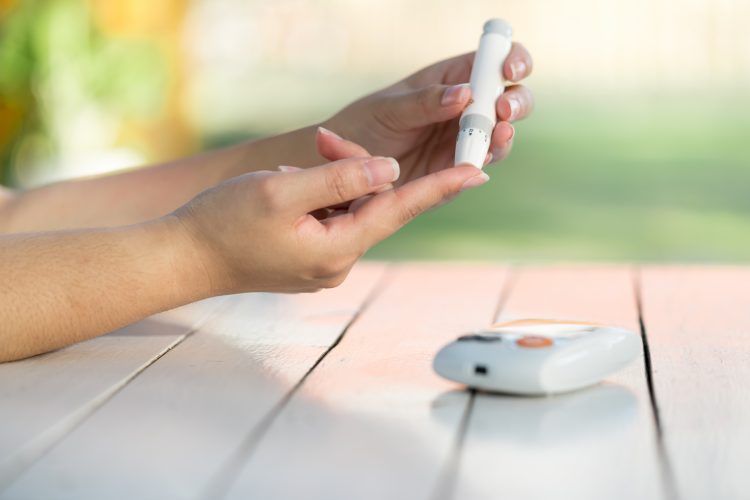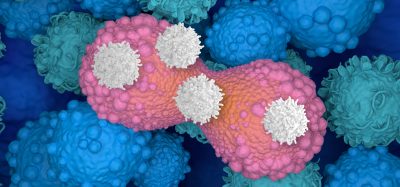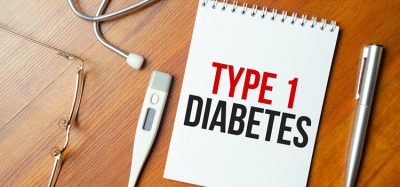Islet protective factor GDF15 reduces development of type 1 diabetes in mice
Posted: 10 January 2020 | Hannah Balfour (Drug Target Review) | No comments yet
Researchers have discovered that type 1 diabetes patients have low levels of growth differentiation factor 15 (GDF15) in their pancreatic β cells, unlocking a potential alternative to life-long type 1 diabetes disease management.


Researchers have identified that low levels of growth differentiation factor 15 (GDF15) in pancreatic islet β cells is associated with type 1 diabetes and showed that treatment of non-obese diabetic mice with GDF15 reduced development of diabetes by over 50 percent. The discovery could open the pathway for a new class of type 1 diabetes drugs, islet protective factors.
Given that type 1 diabetes has, so far, proved incurable, scientists are looking instead to prevent it. Type 1 diabetes is a blood sugar regulation disorder caused by an autoimmune response destroying islet cells in the pancreas responsible for producing the hormone insulin. In this study, researchers revealed how pancreatic proteins responded to treatment with bodily substances thought to be involved in the process of diabetes; of the 387 affected by the substances, they focused on GDF15.
“We wanted to identify proteins that can intervene in the diabetes disease process,” said Ernesto Nakayasu, co-lead author of the study and a biomedical scientist at the Pacific Northwest National Laboratory, US, where the study was conducted. “We became interested in GDF15 because the protein level was suppressed by 70 percent after treatment.”
Biomarkers aren’t just supporting drug discovery – they’re driving it
FREE market report
From smarter trials to faster insights, this report unpacks the science, strategy and real-world impact behind the next generation of precision therapies.
What you’ll unlock:
- How biomarkers are guiding dose selection and early efficacy decisions in complex trials
- Why multi-omics, liquid biopsy and digital tools are redefining the discovery process
- What makes lab data regulatory-ready and why alignment matters from day one
Explore how biomarkers are shaping early drug development
Access the full report – it’s free!
GDF15 has protective effects in different types of cells in the human body, but its role in pancreatic islets had previously never been studied. The team measured levels of GDF15 in pancreas tissue from people with diabetes and found it was depleted in their malfunctioning β cells.
In the study, treatment of non-obese diabetic mice with GDF15 reduced diabetes development by 53 percent. Non-obese diabetic mice are commonly used to test type 1 diabetes treatments because spontaneously develop autoimmune diabetes similar to the condition in humans.
“We hypothesised that reduced GDF15 was not a good thing for islet survival and indeed that was the case,” said Professor Raghu Mirmira, one of the principal investigators. “This work opens the way for us to consider these sorts of ‘islet protective factors’ as therapies to prevent or reverse type 1 diabetes.”
GDF15 has protective effects in different types of cells in the human body, but its role in pancreatic islets had previously never been studied”
“This approach differs substantially from current thinking that targets the immune system. While GDF15 may be one new therapy, we identified other proteins that may work in conjunction with GDF15, so this work really represents a treasure-trove of information that can be mined for new therapies,” said Mirmira.
The team are continuing to research whether low levels of GDF15 in islets may play a proactive role in instigating the autoimmune attack that ultimately kills them.
Mirmira concluded: “This thinking is somewhat counterintuitive in the type 1 diabetes field, but it is this kind of out-of-the-box thinking that may lead to therapies we never thought of previously.”
The study was published in Cell Metabolism.
Related topics
Disease Research, Drug Targets, Hormones, Research & Development, Therapeutics
Related conditions
type 1 diabetes
Related organisations
Pacific Northwest National Laboratory
Related people
Ernesto Nakayasu








